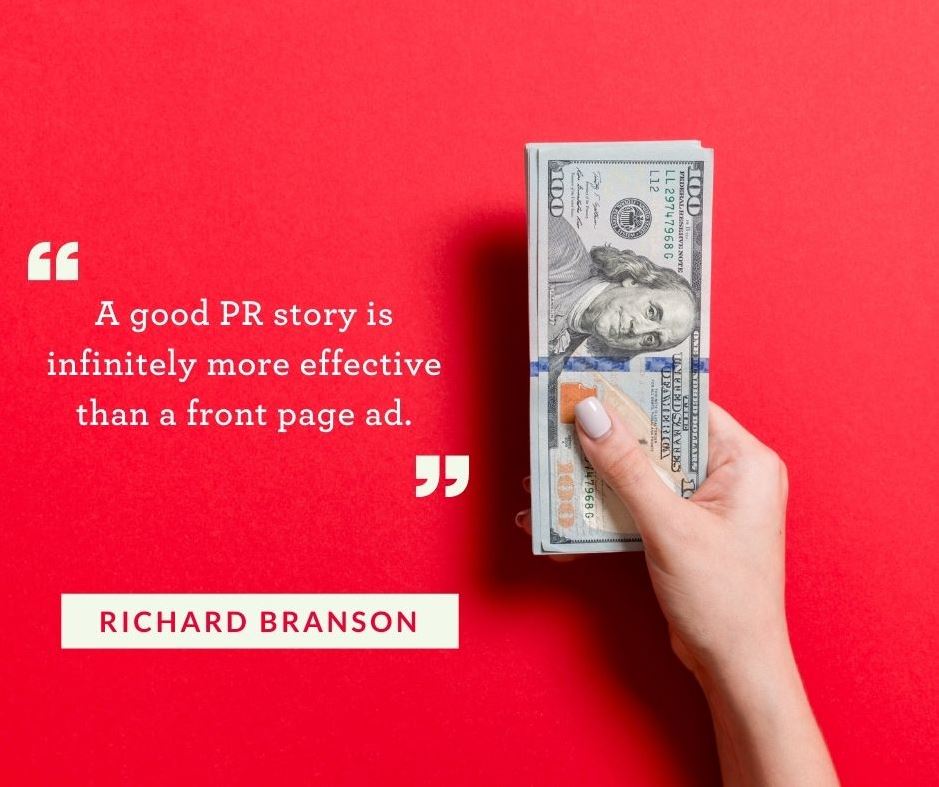How Much Should I Spend on Public Relations Services?

October 22, 2020
By Kacie Escobar, MBA, APR
Gartner’s 2020 CMO Spend Survey discovered 44% of marketing leaders surveyed have already experienced moderate budget cuts as a result of the COVID-19 pandemic. Cost management will remain top-of-mind as marketing leaders plan for the year ahead; however, choosing what to cut and keep is a challenge.
So, how much should you spend on public relations services in 2021?
The short answer: it depends.
Depending on your business size, stage and structure, among other factors, the answer may look wildly different from one organization to the next (sorry to bear the bad news!). Here, we’ll review several cost considerations, but recommend you contact us for a consultation to more accurately guide your budget planning.
Think of It as An Investment
A quick web search indicates 10% of revenues should be allocated to marketing strategy, meaning even less will trickle down to support the public relations function. This might be a good rule of thumb, but a conversation about budget has already degraded if you’re thinking in terms of dollars and cents. Rather than associating public relations with a cost center, consider it as an investment in building loyal stakeholder relationships.
Just as you would not expect a total stranger to become your best friend overnight, one New York Times hit is not likely to earn you a life-loyal customer. Over time, however, many stories about your organization – combined with other public relations tactics such as employee spotlights, customer testimonials and special events – will create brand champions.
How you spend is more important than what you spend. If you’re spending carefully on the right communication strategies, the investment will be worth the return.
Begin with the End in Mind
The practice of public relations involves systematic approaches to influencing attitudes, opinions and behaviors about your brand. When budgeting, the best place to start is not with a conversation about money, but about your organizational goals and the communications strategies needed to reach them.
Clients most often approach us for help with brand awareness, reputation management or thought leadership, but these aren’t the issues really keeping them awake at night. It’s the effect these have on their bottom line.
What are your goals – really? Do you want to increase market share? Grow sales revenues? Increase employee retention? Whatever your business goal might be, there is a marketing strategy to help you achieve it and public relations is integral to its success.
The key to developing a budget for implementation is collaborating with your public relations partners from the start to map cost-effective communications strategies that directly support your business goals. Time spent up front to define SMART (specific, measurable, achievable, relevant, time-bound) objectives will result in more accurate scope-of-work and budget estimates, and more efficient budget management throughout the year.
Anticipate Startup Costs
If you’re working with a PR firm, anticipate the need for startup costs. Just like a new employee needs to be onboarded, so does your PR firm. We strive to be essential partners to our clients, but it’s difficult to serve as an extension of the team if we haven’t been appropriately educated about the company and its stakeholders.
The information-gathering process does not need to be lengthy, nor does the client need to hand-hold throughout. (In our experience, this ramp up lasts anywhere from two weeks to two months depending on resources available and the scope of the assignment.) However, this up-front investment of time and resources is key to equipping public relations teams with the environmental awareness needed to deliver satisfying service and results over the course of the engagement.
Establish a Contingency Budget
It may take weeks, months or even years to build a reputation and just seconds to destroy it. When crisis hits, employees, customers and other stakeholders demand timely, transparent and truthful communications. You want a public relations partner on call who will run through walls to save your reputation – and a budget available to compensate them for the time it takes to support.
Crises aren’t the only contingencies for which you should plan. PR firms are not only constantly scanning the environment for threats to your marketing strategy, but also for opportunities. With your goals in mind, practitioners may identify and make recommendations to capitalize on opportunities for raising awareness, establishing authority or influencing consumer action.
Delegate Earned Media to the Experts
Marketers frequently turn to their PR partners for help generating media coverage. Although public relations is more than media relations, we recognize its importance. Publicity is one of the most-employed tactics in our field for good reason. Not only is it more cost-effective than other forms of paid advertising or sponsorship, but it quickly establishes trust in your brand.
Indeed, when asked which sources they trust for information about brands and services, 8,000 consumers around the world identified “news and information websites” and “printed newspaper/magazine articles” among the top.
Securing this type of earned media coverage is difficult. Even before suffering impacts of the pandemic, newsrooms were experiencing significant workforce and resource reductions, and the workload for journalists who remain has increased as a result. Tracking job changes and shifts in responsibility and managing follow ups to ensure story pitches are received has increased the need for a dedicated media relations effort.
In a data-driven communications strategy, public relations teams are not only securing coverage, but analyzing the coverage against pre-determined performance indicators and contextualizing it in a way that enables strategic planning. If you weren’t partnering with a PR firm to manage this effort before, it may now be wise to delegate this responsibility while internal teams focus on other elements of your marketing strategy.
Final Considerations
Public relations practitioners are trained to serve as the conscience of an organization, advising senior leaders on the marketing and communications strategies that create and maintain mutually beneficial stakeholder relationships. Among the benefits of investing in a PR firm, employing partners who make your job easier, serve as a sounding board and can provide an objective view of your challenges and opportunities top the list.
Although there is no easy answer to the question about budgeting for public relations services, these considerations should factor into the equation.




